It all started with one completely anatomically accurate virtual person. And then they slashed the person to ribbons.
It reads like the beginning of some screwed up Bible, right? In the beginning, there was man, and then man got his skull caved in by a sledgehammer shotgun. That’s kind of how things went for chaotic monster-slaying FPS Killing Floor 2‘s gore and dismemberment system, though. Creative director William Munk told me that his studio spent a year of development time on making sure blood spurted just right, sinews snapped like meaty rubber bands, and fat didn’t burst so much as it parted itself, like the red sea or my hair on a bad day, to let blades and bullets pass through.
They wanted to make the most detailed, horror-movie-like gore system in video game history. By most accounts, they appear to have succeeded.
Parting The Red Sea
It’s absurd. Let’s take it from the top (or in this case, the bottom): when blood is spilled in a Killing Floor 2 match, it hits the ground and stays there. There’s no tech wizardry making it disappear while you’re not looking, no secret viscera cleanup detail skulking around in the shadows. By the end of a match, it’s almost impossible to find a surface that isn’t slick with sticky red. I had to know: how does it all work? And why would anyone put this much effort into blood and gore?
Turns out, doing it wrong would have broken the game. This is a game where you’re mowing down around, I would say, 50-100 baddies per minute. Forcing the game to calculate that much high resolution blood all the time? It’d crash in a heartbeat. The Tripwire Interactive team had to get crafty about it.
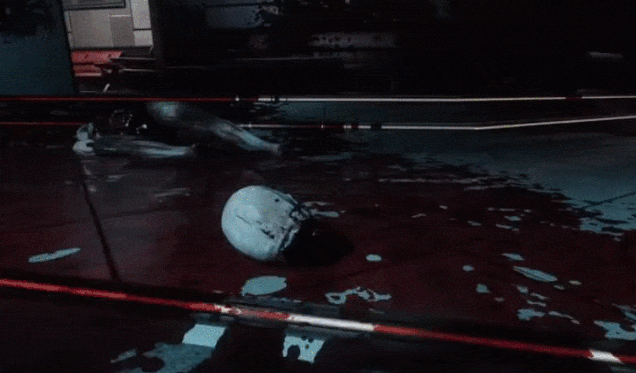
Their secret? The blood is always there. On everything. You just can’t always see it.
“The blood is pretty much always there,” Munk said during an interview. “You just can’t see it until it gets exposed. It’s not a decal. It doesn’t hurt the game’s performance. Whether it’s ‘there’ or not, there’s no difference.”
“For the persistent blood [on the floor], we use a persistent blood map,” art director David Hensley elaborated. “The map for the whole thing is really low resolution. Every time blood hits it, it colours that pixel that dark. And then we do a filtering on it so it kinda turns into a blurred triangle, or a diamond shape. And then we multiply a splatter map, so it looks all splattery, bloodlike. That creates kinda the blood pattern shape. We vary the opacity of that pixel so it doesn’t look like the same blood splotch everywhere.”
Munk, Hensley, and co have wanted to do persistent blood for years, but they couldn’t figure out how to make it work in previous games. This is a first.
“It’s kinda what we dreamed we always wanted to do,” said Munk. “Our company has been around for ten years, and we’ve been talking about the things we have in this game for ten years. We wanted to have persistent blood in [historical war shooter] Red Orchestra 1, but we couldn’t figure out how to do it without hurting performance.”
It’s a lot to take in for those who aren’t technically minded, but the message is clear: video game blood is complex stuff. And that? That’s just the beginning.
Painstaking Detail
Blood all over the floor? A neat trick, but it’s nothing without, you know, bodies. Moaning, groaning balloons of blood ripe for the popping. In Killing Floor 2‘s case, they’re known as Zeds — mutant monsters with a serious craving for sweet, sweet jugular, who won’t stop coming at you until you stop them cold. And yes, they bleed, but they also do so much more. If, for instance, you shoot or slice one in the head, here’s how it breaks down:
“For the head, each Zed has its own head, and inside that is a skull mesh,” explained character artist Andrew Quintiliani. “If you blow away the left half of the head, it will take out the skull. You can see that the Zed is missing a solid half of its head. And then if you look at it, you’ll see that there’s an accurate sinus system, brain cavity, and brain matter. Then you can see part of the throat, and if you blow off the jaw you can see back into the oesophagus.”
“I tried to put a lot of detail into it. That’s what makes it look really disgusting. A lot of games just have generic meat chunks. That’s fine, we have a few of those too. But that’s on top of accurate muscle and sinew and bone explosions.”
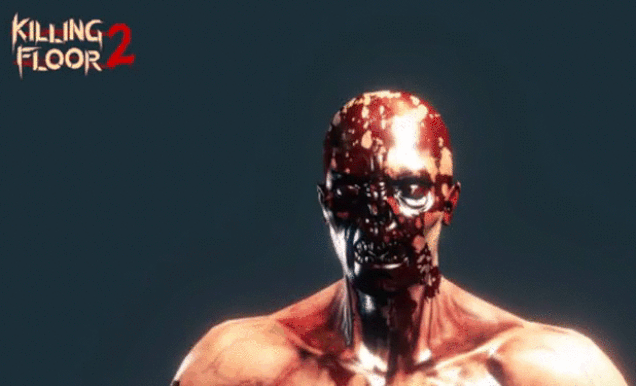
There’s a similar level of detail in every limb, every joint, cavity and crevice. Quintiliani told me that every enemy has between 22 and 24 individual layers, each of which include meat, bone, blood and fat. Now understand that every single time you slice or shoot an enemy in Killing Floor 2, each of those layers is being deformed or damaged in different ways. Ready for the truly deep dive into How It All Works? OK, here we go. I asked Hensley to tell me what happens from the moment a bullet or blade makes contact with a Zed’s skin until the second it exits on the other side. It’s a doozy.
“We have a regular character skeletal mesh, and then we have a second gore mesh,” he said. “Whenever a Zed’s dismembered, we switch from the regular mesh to the gore mesh. The gore mesh has got each limb pre-cut, and it’s got bones and meat and sinew and veins inside of it. You can’t really see it normally. When he’s moving, he’s deforming the way the regular mesh deforms. But say you cut an arm off. We break the physics constraint of that arm, and then we locally switch the vertex weighting in that area from blended to rigid. We have two sets of vertex weighting on the gore mesh, and we can switch between the two on a per-bone basis.”
“And then we also attach a blood jet emitter to the limb portion that’s still attached to the body, and then we attach a blood spray emitter — they’re different — to the limb that’s flying through the air. And then we have a blood splash emitter at the point of dismemberment. And then we also have a really neat feature that bloodies areas of the body where a Zed’s been dismembered. So to do that we have a material that’s basically 16 blood textures combined into one texture that are reassembled into a material.”
Phew. Once upon a time, though, the system was even more detailed.
“One of the first iterations was basically building a generic body that was accurate muscles and bones and organs,” said Quintiliani. “After that, we had to decide what parts of that we actually needed [so as not to sacrifice game performance]. The solution I came up with was basically to make these sort of endcaps. So let’s say you chop a Zed’s arm off. It cuts off the forearm and then fills the new hole with a subcutaneous fat layer, and then it attaches a socket — like a Lego plug-in — of what the muscle and bone should be for that area. So those are all using similar meshes for all the different Zeds, but depending on the Zed, it scales up muscle content, fat content and so on.”
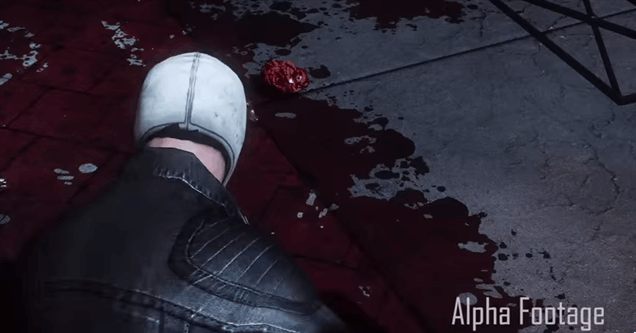
“So the first setup was a fully accurate anatomical model, and then we chopped that up and made it all grisly and gross. Then we baked that down and customised it for each of the creatures. So when you chop them open, it looks accurate, but also like you just busted them open with a hammer or a shotgun or something.”
That was just the first of around five different iterations, each of which were made with a central goal of striking a perfect balance between grisly detail and game performance. No crashing, no stuttering, no matter how many malformed monstrosities are falling to pieces right in front of you. This was not an easy goal to accomplish. Some parts of the system nearly didn’t make it in. After weeks of work and nearly giving up, Hensley figured out how to make blood realistically splatter around a dismembered limb — no joke — in a dream.
“The blood around the dismembered limb was really tricky [to do without slowing down the game],” he said. “I actually ended up figuring out how to do it in a dream. I tried for, like, three days to do it, and I couldn’t figure it out. But that’s what happens when I go to sleep. My brain starts working out problems. Actually when I got to work the next day, I wired it up in about 20 minutes.”
On top of all that, every Zed has around 95 death animations, one of which will play in addition to ragdoll physics depending on where and how you strike an enemy. Every single one was mo-capped, and the team spent around a month planning all of them in conjunction with their their mo-cap guy, Jackamo Harvey. They’d bring him in, act out what they wanted, and then he’d fine tune it. After all the preparation, it apparently only took a couple hours to actually record each and every death animation in the game.
“I’d give Harvey a cue,” said Munk, “and he knew the character. He was one with the character. Each character has about 400 animations [total], but we busted through tons each day. Probably all the death mo-cap stuff we did only took us maybe an hour and a half, two hours to shoot. The dude’s in crazy good shape. He’s a capoeira expert — been doing it for, like, ten years.”
Dedication all around, then.
There Will Be Blood
Killing Floor 2‘s gore/dismemberment system is the culmination of ten years of work. Clearly, the folks at Tripwire like blood and all the assorted mortal fireworks bodies fire off when busted open. But why? Why pour this much effort into the stuff that pours out of us?
“I’m a huge horror freak,” said Hensley. “I’ve worked on the gore system for all of our games, and this is the fifth. All our games have had high levels of gore. Even [historical war shooter] Red Orchestra had extreme gore. You wouldn’t see it often, but when you did see it, it had a huge impact. For Killing Floor 2, we felt like gore was one of the most important things. It’s a horror-based game. We wanted to take blood and gore and dismemberment to the next level. And when you kill something, the reward you get is how it looks and feels. You want to keep doing that over and over.”
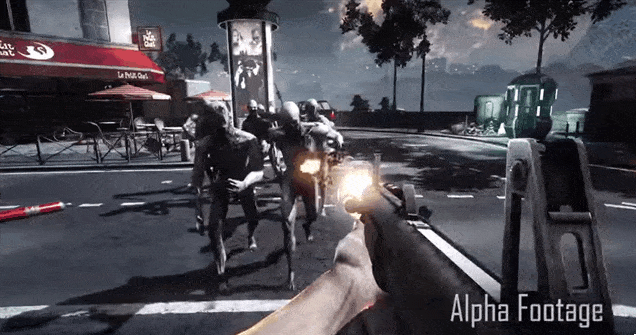
“Sort of the gross out factor,” Quintiliani explained, “but I also really enjoy trying to figure out how they did the practical effects [in movies]. I’m a big fan of practical effect companies, like the studios that did Terminator 2 and Alien. . I love watching the behind-the-scenes stuff. Even in modern stuff with CG, you can still figure out how they composited the shot so that you want to look away because it’s super gross, but at the same time you want to look closer again. It looks like that guy got bit in the face and he’s now missing his nose. But how did they make that work?”
I was curious, though: when you spend years wrist-deep in blood and bone and intestine and muck, designing it from the ground-up to snap and sputter and die, does that take any sort of toll on you? As a person? Or does it change the way you view people — not in, like, a necessarily messed-up way, but rather do you begin to view some people as abstract anatomical shapes, structures made up of discrete building blocks?
“I’m definitely demented,” joked Hensley, laughing. “I’m already immersing myself in it to begin with. I’m a huge gore and horror movie fan. So to me, working on this is like an outlet. I view this completely differently from real life blood and gore, though. I don’t like real life gore at all. I really love virtual gore. Real gore, I’d rather not look at at all. I’m not sure why that is, honestly.”
Quintiliani, however, had a bit of a different take. As a character artist, he spent a lot of his time looking at reference photos to make his art more accurate, realistic. Some of the stuff he looked at was not pretty. Largely, he preferred to use images from movies and games, more over-the-top stuff.
“Even though those aren’t super realistic depictions of the way these things work, it’s more — I don’t know how to phrase this without sounding like a creep — a fun or exciting way of doing it,” he explained. “When you see a video of a body actually in severe physical trauma, it’s incredibly upsetting. It’s not OK.”
In order to create and understand the way some enemy types would work, however, he had to look at pictures that made him extremely upset. People suffering from severe anorexia. Burn victims.
“The reference for [enemy types] The Siren and The Husk were the hardest to look at by far,” he said. “Anorexia can be very upsetting to me on a personal level, and burn victims also strike an emotional chord. I mean, just seeing someone suffering from something so life-shattering is really upsetting. I’ve seen a few documentaries on how anorexia affects peoples lives, and it’s seriously troubling. Girls trying to look like Photoshopped models, causing all kinds of damage to their organs.”
“But you can’t design in a vacuum. Every artist uses tons and tons of research and reference images. The more you know, the better your designs come out.”
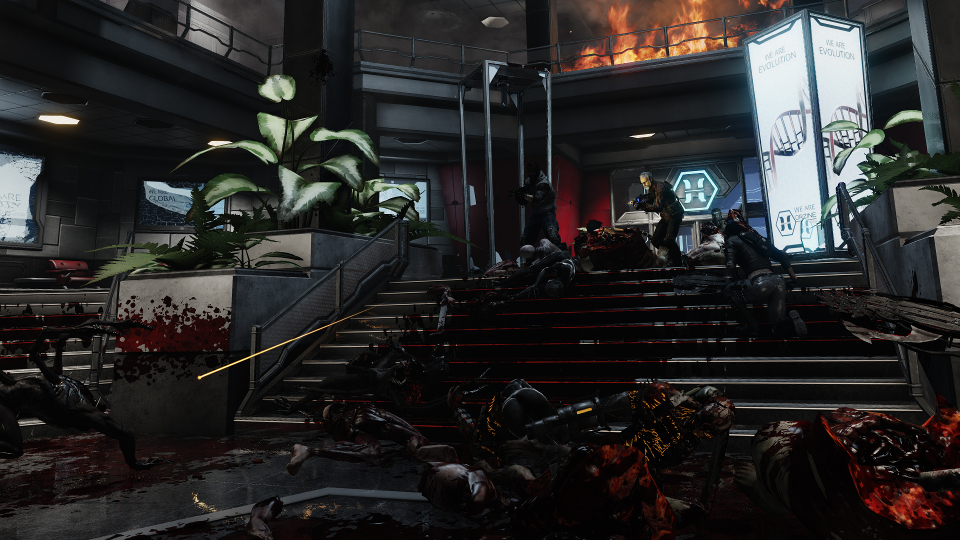
It is, then, a strange intersection between fantasy and fact, creating a game like Killing Floor 2. The game is often cartoonishly ridiculous, but when you’re dealing with the ways a body collapses, crumbles, and dies, you’re never far from real life. For better and for worse, the people behind Killing Floor 2 are hoping — even in all their outrageousness — to strike a balance. Quintiliani summed it all up with an anecdote:
“There’s certain levels of where it’s so over-the-top that you don’t have a frame of reference for what it would be like to experience that,” he said. “A good example is the recent Evil Dead remake. There’s a scene where this guy keeps getting hit with a nail gun. That made my skin crawl so bad. It was like nails on a chalkboard, watching this guy get riddled with roofing nails. There’s so much more horrific stuff in that movie, but that one scene was so hard to watch. We tried to hit somewhere in the middle of [cringe-y and cartoony]. Because if it’s too horrific, you might turn players off a little bit.”
“We do have a gun that fires nails at the Zeds, though.”
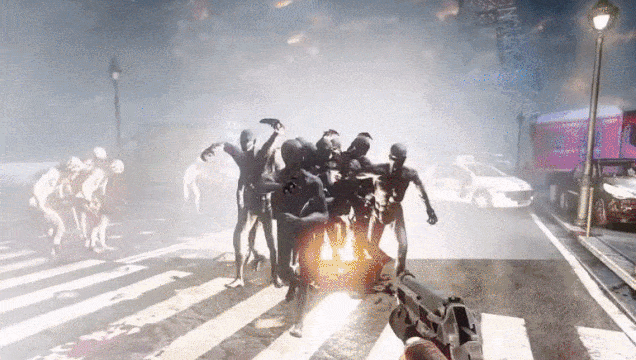
Comments
9 responses to “The People Trying To Make The Goriest Video Game Ever”
About time you did an article on Killing Floor, I don’t think I’ve seen one here for an age, even though the first one has been fairly successful (there are still Aussie servers and it was released 6 years ago)….
Banned in Aus I bet.
If Mortal Kombat X made it through I don’t see why this wouldn’t.
Nope. When are people going to start reading the submission and banning guidelines? Seriously.
Unless there’s drugs or non-consensual sex I don’t see why.
The board has a few buttons – sexual violence, drugs, and messing with corpses. This is SO banned.
The level of detail regarding the various body parts looks about on par with Soldier of Fortune II, but the way they do the blood and detach the limbs is a really cool piece of work.
Edit:
For reference, here is the body destruction model used in the GHOUL 2.0 engine: https://www.youtube.com/watch?v=sd7fsY33L6Y
Read the title real quick and thought it said Gooniest game ever. I was super excited for a moment.
I don’t see any sex anywhere, so I don’t think Australia will ban it!
Just finished playing Dead space 1. I know it’s old, but the dismembering of the bodys reminds of that, especially with all the blood splatter and being able to push the bodies around and run over them.
Stop living in 2001. Only drugs with rewards and sexual violence gets banned now. No game has been banned for violence since the R rating was introduced. Get with the times, the CB doesn’t care about blood/gore these days. Have you played Outlast? MKX? Dying Light? Even GTAV allows drug use. As well as torture and all the other stuff. Yeah even the hookers in first person riding you is allowed now.
But who cares about bans and the CB anymore? With region free games and digital PSN cards, piracy etc the CB serves no practical purpose. They have become laughably pointless. Even Customs can’t do anything anymore with everything goimg digital.
Australia, the idiot nation.